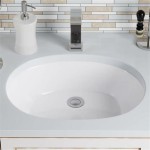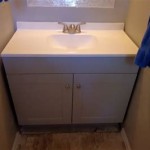Replacing a Bathroom Exhaust Fan Without Attic Access
Replacing a bathroom exhaust fan is a common home improvement project, but it can become tricky if you lack access to the attic. This situation, often found in older homes or those with unique architectural designs, can make the task seem daunting. However, with the right tools and knowledge, you can successfully tackle this project without needing an attic crawl space.
This article will guide you through the process of replacing a bathroom exhaust fan when attic access is unavailable. It will outline essential steps, safety precautions, and potential challenges to help you complete the project efficiently and with minimal disruption to your home.
Step-by-Step Guide to Replacing a Bathroom Exhaust Fan
Replacing a bathroom exhaust fan without attic access involves a different approach compared to typical installations. Here's a breakdown of the essential steps:
1. Preparation and Safety
Before you begin, ensure you have the proper tools and safety equipment. Here's what you'll need:
- New bathroom exhaust fan with the same or similar size and specifications as the old one
- Screwdriver set
- Wire cutters
- Wire strippers
- Voltage tester
- Electrical tape
- Safety glasses
- Work gloves
- Ladder (if necessary)
Remember, working with electricity can be dangerous. Always follow safety protocols:
- Turn off the power to the bathroom exhaust fan at the circuit breaker.
- Use a voltage tester to confirm the power is off before disconnecting any wires.
- Wear safety glasses and work gloves to protect yourself from potential hazards.
2. Removing the Old Fan
With the power off, you can begin removing the old fan. First, locate the screws securing the fan cover to the ceiling. These screws are usually found around the perimeter of the fan cover. Once you've identified them, remove the screws using a screwdriver. Gently lift the fan cover off the ceiling, taking care not to damage any wiring or the housing.
Next, remove the screws that hold the fan unit to the ceiling. This might involve removing the fan blades, which are usually secured with nuts or screws. Once all the screws are removed, you can gently pull the fan unit away from the ceiling, disconnecting any wiring connected to it.
3. Installing the New Fan
With the old fan removed, you can begin installing the new fan. Start by attaching the new fan unit to the ceiling using the provided screws. Ensure the fan unit is positioned correctly and securely fastened.
Connect the wiring from the new fan to the existing wiring in the ceiling. The color coding of the wires will help you identify the correct connections. Black wires go to black wires, white wires to white wires, and ground wires (usually green or bare copper) to the ground wire. Secure all wire connections with wire nuts.
Before you reattach the cover, test the new fan by turning the power back on at the circuit breaker. Ensure the fan operates as expected. If everything works correctly, you can reattach the fan cover using the screws that came with the new fan.
Potential Challenges and Solutions
While this guide provides a general approach, some unique situations might arise when replacing a bathroom exhaust fan without attic access. Here are some common challenges and their potential solutions:
1. Limited Space
Working in tight spaces can make it challenging to maneuver and access the fan unit. Consider using a flexible extension screwdriver or a small, compact tool set to reach screws in confined areas.
2. Difficult Wiring Access
The wiring might be concealed within the wall or ceiling, making it difficult to access and connect the new fan. You might need to use a small wire-pulling tool or a fish tape to guide the new wiring through any tight spots.
3. Older Wiring
Older homes might have outdated wiring that could be damaged or incompatible with the new fan. It's essential to carefully inspect the existing wiring before connecting the new fan. If you suspect any problems, consult a qualified electrician to address them before proceeding with the installation.
Final Thoughts
Replacing a bathroom exhaust fan without attic access requires careful planning, patience, and some DIY skills. By following the steps outlined in this guide, you can successfully complete the project and enjoy the improved ventilation and fresh air in your bathroom. Remember to prioritize safety and, if you encounter any significant difficulties or are unsure about the project's scope, don't hesitate to consult a professional electrician.

How To Replace A Bathroom Exhaust Fan Without Attic Access 12 Step Guide Home Inspector Secrets

How To Install A Bathroom Fan Without Attic Access Atkinson Inspection Services

How To Install A Bathroom Fan Without Attic Access

How To Replace A Bathroom Exhaust Fan Without Attic Access 12 Step Guide Home Inspector Secrets

Bathroom Exhaust Fan Replacement Upgrade No Attic Access

How To Replace A Bathroom Exhaust Fan Without Attic Access 12 Step Guide Home Inspector Secrets

How To Replace A Bathroom Fan With No Attic Access Repair Maintenance

Revent 50 Cfm Quick Install Professional Ceiling And Wall Mount Easy Roomside Bathroom Bath Exhaust Fan Rvp50 The Home Depot

Bathroom Exhaust Fan Replacement Upgrade No Attic Access

Bv Bathroom Fan Ultra Quiet Ventilation Exhaust 110 Cfm 1 2 Sones Ceiling Residential Remodel Extractor 4 Inch Duct Collar Easy To Install In 2024







